-
-
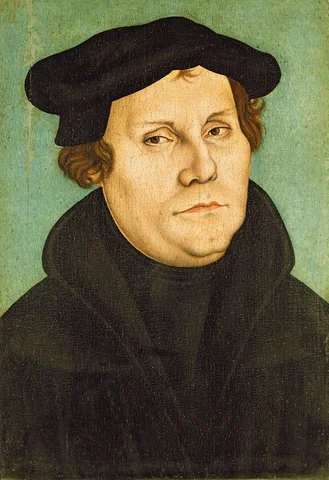 -According to him Salvation was free, and one did not have to pay anything to obtain it.
-According to him Salvation was free, and one did not have to pay anything to obtain it.
-Any priests declaring that buying indulgences could free a man of his sins was lying.
-Christians who were seaking for pardon should turn to charity instead of buying expensive letters of pardon. -
-
 The New Testament translated into English by William Tyndale.
The New Testament translated into English by William Tyndale. -
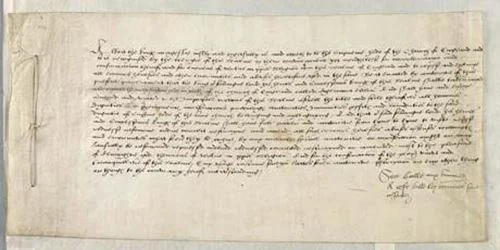 -The King was made "Supreme Head of the Church of England.
-The King was made "Supreme Head of the Church of England.
-It is when the schism happened. -
Rebellions in Yorkshire and Lincolnshire
The inusregents were against :
-The dissolution of the monasteries and the Reformation.
-They aslo demander the restoration of the Pope and of Mary Tudor to the Royal Succession.
-Economic grievances were also at the centre of the rebellions. -
Permission given for an English Bible and not a Latin one.
-
Held in the city of Trent :
The symbol of the Counter Reformation.
-The Roman Catholic Church attempted to correct some abuses of the Church.
-And harshly condemned protestants heresies.
The Pope's hositiloty to the Elizabethan relgious settlement was growing :
-He instructed Catholics not to attend Anglican Church services. -
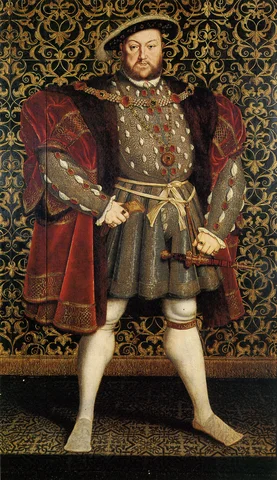
-
-
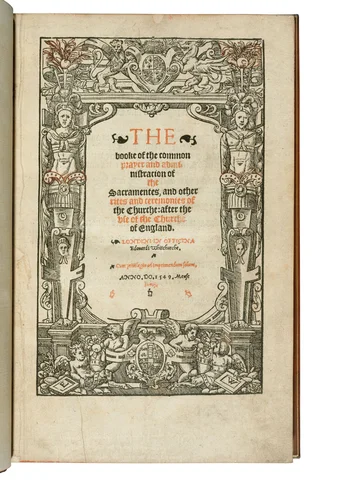 Remplaced Latin services with English.
Remplaced Latin services with English. -
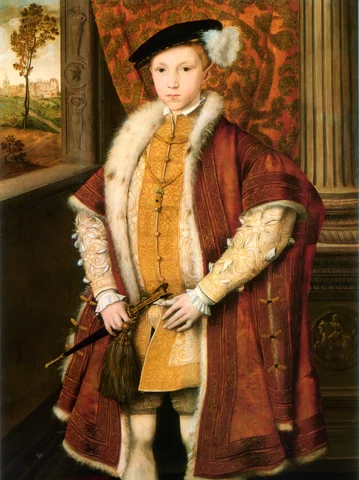
-
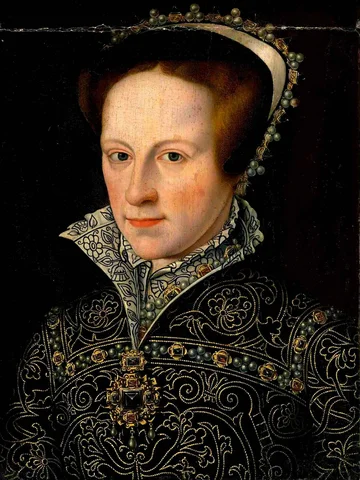
-
-
Poor laws passed in 1553,1597, and 1601 :
This established the idea that central and local governments had a responsability for helping the poor.
But it also established a distinction between the "deserving poor" and the "undeserving poor".
These laws were very harsh against beggars and vagrants. -
-Heretics were burned.
-Over 200 Protestants went to the stake. -

-
-
Religious belief
-Every parish had to use the book of Common Prayers.
-People who did not attend an Anglican service were fined. -
Church organisation
-Abolished the authority of the Pope.
-Restored the authority of the Queen over the Church.
-Became "Spreme Governor of the Church of England". -
-
Between 1559 and 1561, Elizabeth had a love affair with Robert Dudley, the first Earl of Leicester.
The whole court thoyght it was going to leadto a marriage.
However, he was married a the time and his wife had brest cancer.
William Cecil did not aprove this and spread a nasty rumour : Robert Dudley wanted to poison his wife.
When she was found dead, he was suspected.
Thus the marriage between Robert Dudley and Elizabreth I was impossible. -
Doctrine
-Started the doctrine of the Church.
-3 importants changes : a new ecclesiology, a new doctrine of salvation, a new definition of sacrements and of the mass.
-Still in use today. -
-
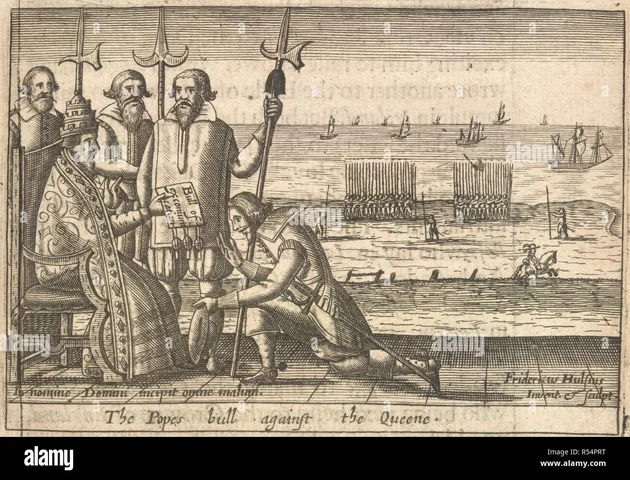 Pope Pius V issued the papal bull :
Pope Pius V issued the papal bull :
-It called Elizabeth the "so-called queen", "a heretic favouring heretics".
-It excommunicated Elizabeth.
-Almost giving Catholics licence to kill her with the certainty that it would not be seen as a crime by Rome. -
 Made it treason for anyone to say that Elizabeth was not the true Queen of England and Wales.
Made it treason for anyone to say that Elizabeth was not the true Queen of England and Wales. -
-It provided for the death penalty for any person coverting, or already converted to Catholicism.
-It was now forbidden to participate or celebrate the Catholic Mass.
-Anglican services were compulsory : §20 per month fine. -
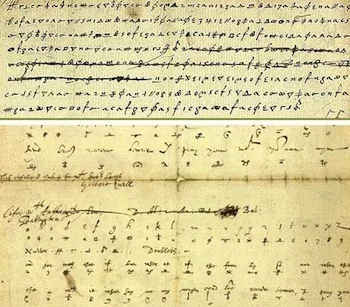 Young Catholics had sworn to kill Elizabeth to put Mary Stuarton the throne but their strategies were discovered by Francis Walsingham when he managed to decipher a message between Mary and this group.
Young Catholics had sworn to kill Elizabeth to put Mary Stuarton the throne but their strategies were discovered by Francis Walsingham when he managed to decipher a message between Mary and this group. -
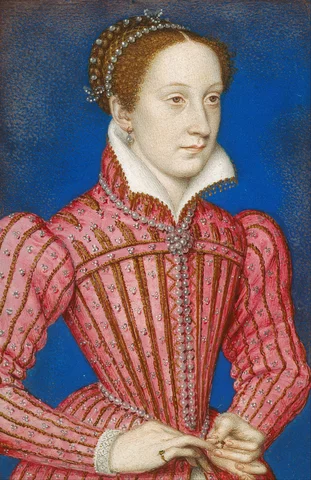
-
 England won against the Spanish Armada.
England won against the Spanish Armada. -
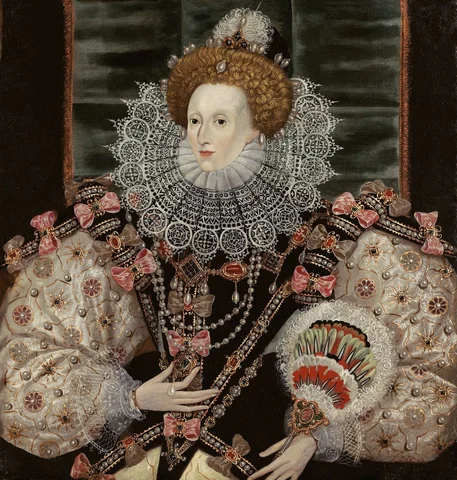
-
-
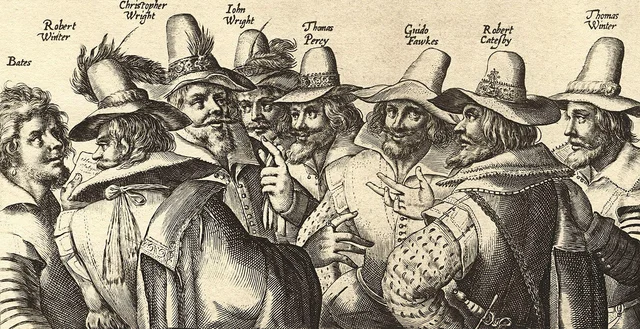 It was a conspiracy devided by a small group of Catholics to blow up Parliament and kill James I.
It was a conspiracy devided by a small group of Catholics to blow up Parliament and kill James I. -
 An area named Virginia, after the Virgin Queen, became the first permanent English settlement in North America in 1607.
An area named Virginia, after the Virgin Queen, became the first permanent English settlement in North America in 1607. -
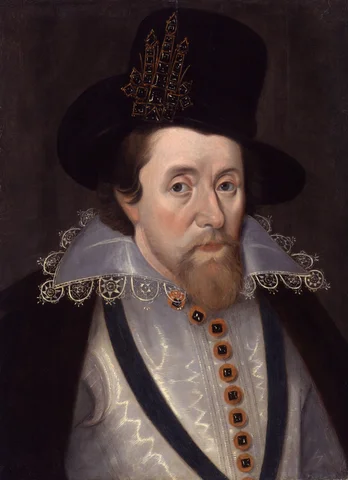 It was a financial reform explaining the King would receive a fixed sum from the Parliament. His aim was to become financially independant, a thing the MPs feared.
It was a financial reform explaining the King would receive a fixed sum from the Parliament. His aim was to become financially independant, a thing the MPs feared.
The Parliament did not vote in favour of the Great Contract which led to King James I dismissing the Parliament. -
-
The Elector Palatine, who had married the daughter of James I, was invited to take the throne of protestant Bohemia in place of the Emperor Ferdinand Habsburg.
The Emperor sent his army and was supported by Catholic Spain.
The Elector Palatine was supported by German princes,Scandinavia, France, the Dutch Republic.
James I wanted to intervene to help his daughter and son in law and because England as a protestant power had to intervene. -
 James I summoned a Parliament to ask for money for war, but the Parliament did not want to attack directly the Spanish forces, but to wage at sea.
James I summoned a Parliament to ask for money for war, but the Parliament did not want to attack directly the Spanish forces, but to wage at sea.
James I was angered.
Parliament answered with a Protestation, asserting that Parliament's privilege existed by right, and not by gift of a monarch.
James I tore Commons' Protestation and dissolved Parliament. -
The Parliament agreed to finance the war on spain in 1624 but it would mostly be for the next king, Charles I.
-

-
-
 It contained the MPs complaints :
It contained the MPs complaints :
They requested the King to recognise the illegality of extra-parliamentary taxation, billeting, martial law, imprisonment without trial.
They wanted to get Charles to recognise that there were limits to his power.
A petition which James I signed but was furious about. And when MPs were discussing impeaching Lord Buckingham again, James I suspended Parliament seating. -
When MPs complaints started over in the next parliamentary in January 1629, the King declared another adjournment.
By then, the MPs were increasingly suspicious of the King's religious support of Armanians and atitude towards Parliament.
The MPs did not let the Speaker of the House put an end to the discussion. -
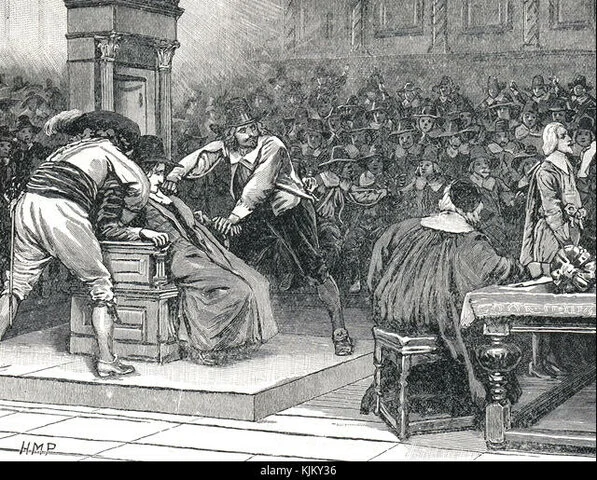 The MPs passed the Three Resolutions :
The MPs passed the Three Resolutions :
-It declared that whoever tried to bring in "Popery or Armenianism" or to alter the protestant forms of the Church of England was an enemy to the Kingdom.
-As well as anyone advising the King to collect custom duties without Parliament's consent.
It was considered as an act of open defiance by James I.
So James I imprisoned MPs and dissolve parliament.
He declared there would be no more parliaments, and it is the start of the : "Personal Rule". -
A period of 11 years when King James I ruled the country without calling a parliament.
Whig historians called it "The Eleven Years Tyranny". -
 Those 3 men who had written pamphlets attacking Archbishop Laud, an Arminian, were put in the pillory and their ears cut off.
Those 3 men who had written pamphlets attacking Archbishop Laud, an Arminian, were put in the pillory and their ears cut off. -
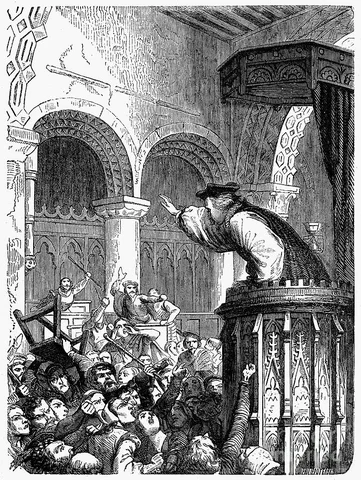 A riot erupted in St Giles' Cathedral, Edinburgh, on the reading of the New Prayer Book.
A riot erupted in St Giles' Cathedral, Edinburgh, on the reading of the New Prayer Book.
A local woman, Jenny Geddes, picked up her stool and threw it at the preacher.
This widespread rebellion was known as the Bishops' wars. -
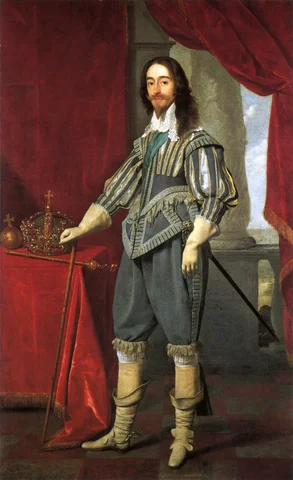
-
-
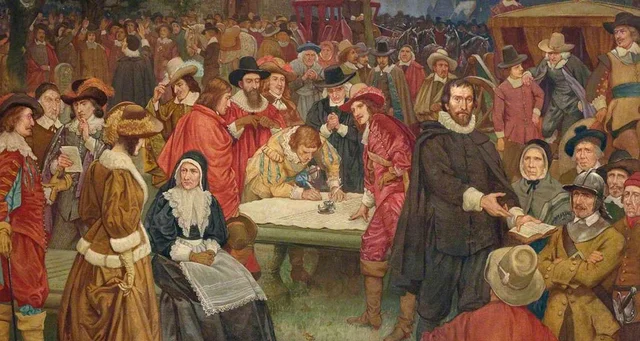 It was a petition opposing Charles' religious policy, it called for the spiritual independance of the Scottish Church to be maintained signed by Charles I's leading opponents in Scotland.
It was a petition opposing Charles' religious policy, it called for the spiritual independance of the Scottish Church to be maintained signed by Charles I's leading opponents in Scotland.
To Charles, this was an act of open rebellion.
Scotland and England both started to form an army.
It led to the Bishops' Wars. -
Charles I called a parliament for the first time in 11 years to ask for money to fight the Scotts.
This event is called "the short Parliament" because as MPs demanded the King to address their grievances first, Charles I dissolved it after only 3 weeks. -
harles had to call parliament again. It was called "the long parliament" because it would not be dissolved before 1660.
-
The Scots invaded England and emerged victorious.
There was a Peace Treaty, the Treaty of Ripon of October 1640.
Charles was forced to pay the cost of the Scot's army, which was a humiliation. -
The 1640 Parliament was determined to remedy 11 years of grievances and wanted to ensure regular parliaments :
They passed two acts ensuring that :
-Parliament should meet at least every 3 years.
-The dissolution of Parliament required its consent.
Parliament also executed Earl Stafford, one of the King's most powerful advisers (scapegoat for the King's policies during the Personal Rule). -
In order to prepare the fight, an army was necessary, thus, Parliament passed the Militia Act which said that the army should be placed under the control of a general appointed by Parliament.
This Act was taking away the King's ability to appoint whoever he wanted. -
 On October 1641, Irish Catholics rebels rose up against Protestants settlers.
On October 1641, Irish Catholics rebels rose up against Protestants settlers.
This was due to the implantation of a plantation policy by James I in 1603 which sent English and Scottish protestants colonists to Ireland to take the lands of Irish Catholics.
The Irish Rebellion led to a massacre of around 4000 Protestants.
Furthermore, false rumours said that Irish atrocities made 200 000 protestants massacred.
These rumours fuelled the anti-Catholics sentiment in England. -
It summarized all the wrong doing of Charles I and concluded on "revolutionary" demands :
-The right of ther House of Commons to choose the King's ministers.
-The right for Parliament to control any army sent to Ireland.
-The right for Parliament to reform the Church.
This document had impacts :
It devided Parliament into 2 groups
-The Parliamentarians : who believed this reform was necessary.
-The Royalists : who thought that the Grand Remonstrance's demands were too extreme. -
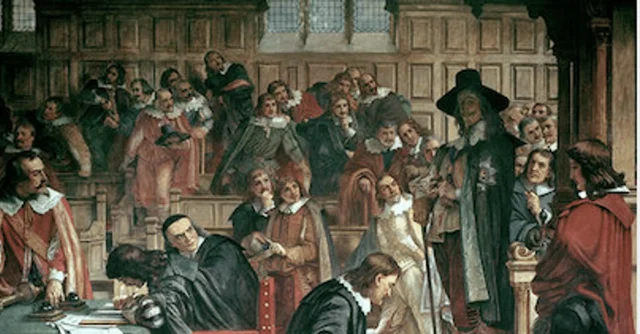 Charles believed that John Pym and 4 other MPs were plotting against the Queen.
Charles believed that John Pym and 4 other MPs were plotting against the Queen.
He wanted to impeach them, but Parliament refused.
Thus, he merched into the House of Commons with troops to arrest 5 MPs on January 1642.
It was a breach of privilege, which showed there could be no peace between King and Parliament.
Feraring for his life, Charles I left London for York.
Parliament presented the 19 Propositions to the King, whith the most extreme stating Charles as a constitutional monarch. -
Not long after that Charles I merched into the House of Commons to arrest 5 MPs, he formally declared war on Parliament on 22 August 1642.
The First Civil War would cost the lives of 190 000 Englishmen, in combat and from diseases, and last for four years.
This was opposed the Parliamentarians, called "Cavaliers" and the Royalists, called "Roundheads". -
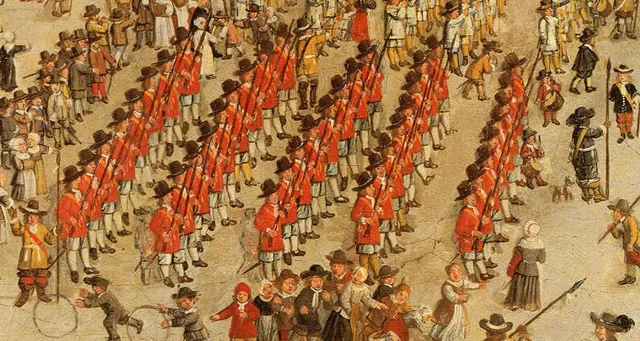 The New Model Army was created in 1644 by the Parliamantarians.
The New Model Army was created in 1644 by the Parliamantarians.
Unlike the earlier regional armies, this was a national, centralized army, controlled and paid from Westminster rather than the counties.
They wore the redcoat.
Religious fervour were convinced that the army was acting on God's behalf.
Its nickname was the "praying army" so soldiers carried the Bible in their breast pocket.
It was a vehicle for the emergence of new radical ideas : Democracy, importance of the people, egalitarianism. -
During the June 1645 Battle of Naseby, the Royalists forces weaken.
In May 1646, the King and the Royalists surrended.
Charles surrended to the Scots, who handed him to Parliament.
Since they thought the war was over, the House of Commons decided to disband the New Model Army but they did not pay what was due to the soldiers.
This led to mutiny. -
The fact that the New Model Army had not been paid by the House of Commons, the New Model Army seized the King in June 1647.
-
 In November 1647, Charles I escaped from army custody and allied himself with the Scots, promissing to introduce Presbyterianism and Calivinism into England, and in return, the Scottish army would invade England and restore him to power.
In November 1647, Charles I escaped from army custody and allied himself with the Scots, promissing to introduce Presbyterianism and Calivinism into England, and in return, the Scottish army would invade England and restore him to power.
Parliament was horrified because Charles I was using a foreign army to wage war on his own people, and it led to the Scond Civil War. -
The Second Civil War started when Charles I used a foreign army to wage war on bhis own people.
The Second Civil War was made of a series of revolt in the South of England, Wales, and Scotland.
The Royalists were easily defeated by Cromwell.
The Second Civil War was very short since it lasted from January to Autumn 1648. -
It refers to the period between 2 reigns and 2 kings.
England declared a Commonwealth, so governed by its people without a King.
But the failure to reach stability led to the creation of a "Military Protectorate" ruled by Cromwell.
During the Interregnum, there were many experiments with forms of government.
But the main problem was that any republican regime needed the support of both
The propertied classes who wanted stability and order.
The army who wanted religious tolerations and reforms. -
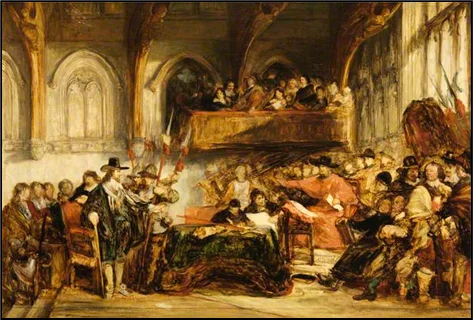
-
After the execution of King Charles I, on January 1649, Monarchy and the House of Lords was abolished, and England was declared a Commonwealth, so a republic.
-
In 1649, after the regicide that was welcomed with shock and dismay in England, there were a lot of changes :
-A law abolished monarchy.
-The House of Commons had supreme authority.
-England was declared a Commonwealth, and ruled as a Republic -
 The Irish Rebellion led by Irish Catholics was crushed by Cromwell and his troops.
The Irish Rebellion led by Irish Catholics was crushed by Cromwell and his troops.
It led to a massacre of the Irish Royalists troops and civilians in Drogheda.
It also led to the Wexford massacre in which every man, every woman, every child were killed.
It was a revenge for the 1641 Irish atrocities. -
This Act aimed at curbing religious extremism.
-
Charles II, the son of Charles I, raised a Scottish Army to invade England. But Cromwell defeated the Scottish Army in 1650 and crushed the uprising of the Scots Royalists forces led by Charles II in 1651.
-
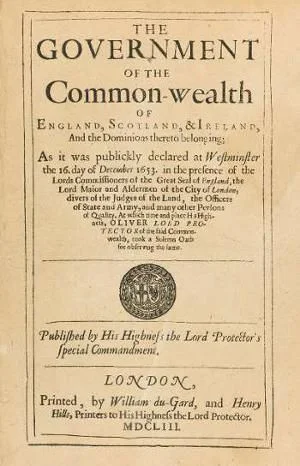 It was the first and only written consitution of England.
It was the first and only written consitution of England. -
 Cromwell was riding through the House of Commons with soldiers and ordered the MPs to leave.
Cromwell was riding through the House of Commons with soldiers and ordered the MPs to leave. -
The Commonwealth ended because there were problems with Parliament :
There was a slow progress with electoral reform.
There were also tensions between Army and Parliament.
The Commonwealth ended and the Cromwellian Protectorate or Military Protectorate started. -
The Protectorate was a military dictatorship, similar to a monarchy without a King.
Cromwell appointed Lord Protector, who had the executive power, cotrolled the military, diplomacy, and rulled with the help of the legislative power.
Parliaments of 460 MPs were elected every 3 years. To be allowed to vote, a man had to own £200 of personal property.
There was the Council of State, which was composed of 13 to 21 members who served for life. -
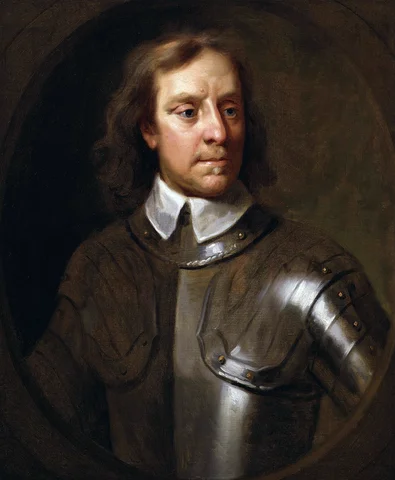 It marked the end of the Protectorate.
It marked the end of the Protectorate.
The success was the war of Cromwell against Catholic Spain.
There was a Royalist conspiracy, which was Penruddock's rising in Wiltshire, he planned to assassinate Cromwell. But the rebellion was contained.
The son of Cromwell, Richard, became Lord Protector but resigned after 6 months.
There were 7 governments in less than a year.
People longed for a return to order, increasing support for monarchy. -
It was the end of the Protectorate and the restoration of the Monarchy.
-
Charles II, the son of Charles I, issued this Declaration which promissed a general amnesty, to continue religious toleration, to share power with Parliament in return for the restoration of monarchy.
-
 The Declaration of Breda issued by Charles II, which amed at the restoration of monarchy worked, so England returned to being a monarchy.
The Declaration of Breda issued by Charles II, which amed at the restoration of monarchy worked, so England returned to being a monarchy. -
The King had no desire for a reconciliation.
He executed the 100 people who had signed the death warrant of Charles I, the father of Charles II.
The corpse of Cromwell was dismembered and his head stayed on a spike in Westminster for 25 years.
There were tensions between :
Parliament, which was now permanent and an institution, so not an event anymore. It also now represented people.
And a King, a royal prerogative, so discretionary powers that placed the monarch above the law of the hand. -
-
It was a series of laws passed during the first 5 years of Restoration.
It was repressive towards religious groups not belonging to the Anglican Church. -
The Act of Uniformity of 1662, from the Clarendon code, stated that all ministers had to swear to conform to the Book of Common Prayer.
-
There was the 2nd Anglo Dutch war which lasted from 1665 to 1667.
There was the 1665 outbreak of Plague.
There was the 1666 Great Fire of London.
The hostility towards Charles II and his court, composed of drunkenness and mistresses, increased. He was nicknamed the "merry monarch". -
There was the Popish Plot in 1678 : it was a rumour of a plot organised by the French to murder Charles II and replace him by his brother James II.
There was the fear that James as a King would implement pro-Catholic politics and might try to restore absolute monarchy, threatening Parliament.
There was also the Exclusion crisis from 1679 to 1681 : Parliament attempted to debar James II from the succession to the English throne, which was against the Divine Rights of Kings. -

-
-
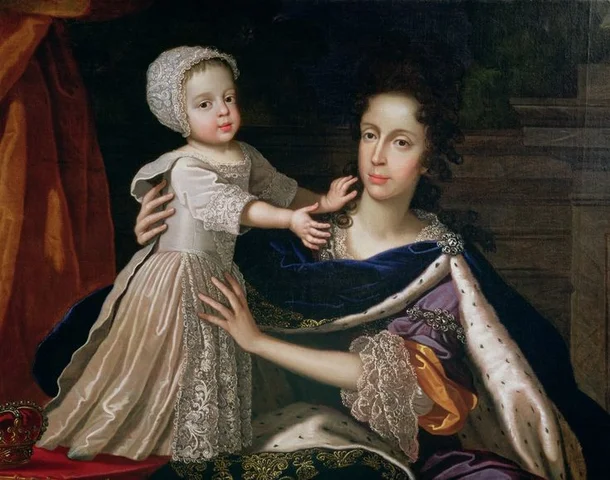 When James II sat on the throne, many were afraid of Catholic absolutism.
When James II sat on the throne, many were afraid of Catholic absolutism.
There were important tensions :
Many were afraid any upheaval, which would be a reversal to the dark times of Civil wars.
There was hope : James was old, and as he did not have male heir, his daughter Mary would soon succeed to him.
But a problem came in 1688 : the second wife of James II gave birth to a son which was a crisis.
It was a Catholic heir, so a threat to Protestantism and to Parliament's powers. -
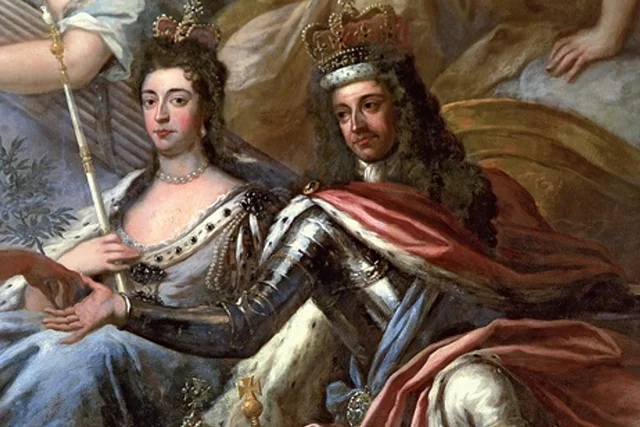 In 1688, Parliament invited William of Orange to invade England and seize the crown.
In 1688, Parliament invited William of Orange to invade England and seize the crown.
William of Orange thus landed with an army of 15 000 men and met no resistance.
James II fled to France and William of Orange became King William III.
It was called the "Glorious" Rveolution because :
There was no shed of blood.
This revolution dislodged the King from his throne and set up his daughter and Dutch husband.
And it created a stable political system.
The liberties of English subjects were reinforced. -
The Glorious Revolution was a key event leading to the transformation of Britain into a Constitutional Monarchy.
The Constitutional Monarchy had as King William III and as Queen Mary II. -
 This Act established religious puralism, and freedom of worship for all Protestants.
This Act established religious puralism, and freedom of worship for all Protestants. -
 It limited the monarch's power for the first time.
It limited the monarch's power for the first time.
It listed ll the misdeeds of James II.
It fixed limitations to the sovereign's powers.
It set out the rights of Parliament.
It set out basic civil rights.
And it was a key political text. -
 Since King William III and Mary II had no surviving children and all the potential Stuart heirs were Catholics, this Act ensured a Protestant succession, and it was ignoring dozens of Catholic heirs.
Since King William III and Mary II had no surviving children and all the potential Stuart heirs were Catholics, this Act ensured a Protestant succession, and it was ignoring dozens of Catholic heirs. -
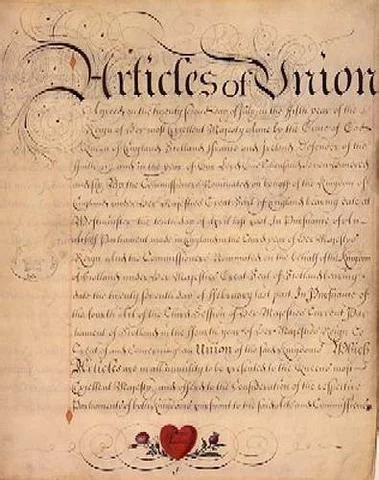 It was the creation of the United Kingdom of Great Britain, which is composed of England and Wales and Scotland.
It was the creation of the United Kingdom of Great Britain, which is composed of England and Wales and Scotland.